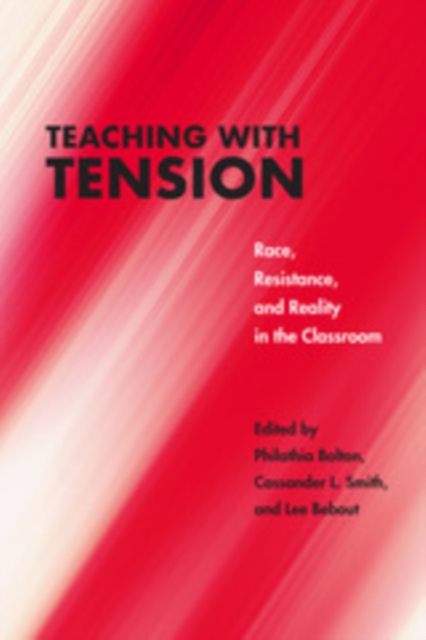
Teaching with Tension : Race, Resistance, and Reality in the Classroom PDF
Edited by Bolton Philathia Bolton, Smith Cassander L. Smith, Bebout Lee Bebout
Part of the Critical Insurgencies series
Please note: eBooks can only be purchased with a UK issued credit card and all our eBooks (ePub and PDF) are DRM protected.
Description
Teaching with Tension is a collection of seventeen original essays that address the extent to which attitudes about race, impacted by the current political moment in the United States, have produced pedagogical challenges for professors in the humanities. As a flashpoint, this current political moment is defined by the visibility of the country's first black president, the election of his successor, whose presidency has been associated with an increased visibility of the alt-right, and the emergence of the neoliberal university. Together these social currents shape the tensions with which we teach.
Drawing together personal reflection, pedagogical strategies, and critical theory, Teaching with Tension offers concrete examinations that will foster student learning. The essays are organized into three thematic sections: "Teaching in Times and Places of Struggle" examines the dynamics of teaching race during the current moment, marked by neoconservative politics and twenty-first century freedom struggles. "Teaching in the Neoliberal University" focuses on how pressures and exigencies of neoliberalism (such as individualism, customer-service models of education, and online courses) impact the way in which race is taught and conceptualized in college classes. The final section, "Teaching How to Read Race and (Counter)Narratives," homes in on direct strategies used to historicize race in classrooms comprised of millennials who grapple with race neutral ideologies. Taken together, these sections and their constitutive essays offer rich and fruitful insight into the complex dynamics of contemporary race and ethnic studies education.
Drawing together personal reflection, pedagogical strategies, and critical theory, Teaching with Tension offers concrete examinations that will foster student learning. The essays are organized into three thematic sections: "Teaching in Times and Places of Struggle" examines the dynamics of teaching race during the current moment, marked by neoconservative politics and twenty-first century freedom struggles. "Teaching in the Neoliberal University" focuses on how pressures and exigencies of neoliberalism (such as individualism, customer-service models of education, and online courses) impact the way in which race is taught and conceptualized in college classes. The final section, "Teaching How to Read Race and (Counter)Narratives," homes in on direct strategies used to historicize race in classrooms comprised of millennials who grapple with race neutral ideologies. Taken together, these sections and their constitutive essays offer rich and fruitful insight into the complex dynamics of contemporary race and ethnic studies education.
Information
-
Download - Immediately Available
- Format:PDF
- Pages:304 pages
- Publisher:Northwestern University Press
- Publication Date:15/01/2019
- Category:
- ISBN:9780810139114
Information
-
Download - Immediately Available
- Format:PDF
- Pages:304 pages
- Publisher:Northwestern University Press
- Publication Date:15/01/2019
- Category:
- ISBN:9780810139114









